Book Title: The Doctors’ Dinner Party
Author: Ibn Buṭlān
Translators: Philip F. Kennedy and Jeremy Farrell
Publication Details: New York University Press, 2024, 168 pp., $16.00 paperback
The Doctors’ Dinner Party was written by Ibn Buṭlān, a renowned physician practicing medicine in the 11th century, and has been translated recently from the original Arabic into English. Scholars believe the book was likely written in Cairo in 1054. Ibn Buṭlān was born in Baghdad and traveled to Cairo where he was not accepted due to his criticism of the physicians there. He was made to leave and traveled to Antioch where he died in 1066 as a monk. Ibn Buṭlān was educated in philosophy, logic, physiognomy, the welfare of monks, and Galenic medicine; he mentions Hippocrates and Galen throughout the text.
The book is written in novella form and is a satirical parody of the medical profession in the 11th century. The author addresses the hypocrisy of quack doctors and the general demise of medicine: “The golden age of medical expertise is gone, succeeded by an era of unqualified charlatans” (p. xviii). This book may have been written in response to his dispute with Ali ibn Ridwan, a well-known physician with whom Ibn Buṭlān had a conflict of opinion. The author tells a story with the theme of distinguishing doctors from quacks.
The story revolves around a young physician who left Baghdad due to inflation and is visiting Mayyafariqin, Turkey seeking work. The young physician is invited to the old physician’s home for dinner partly due to claiming he had an ailing stomach and could not eat. The miserly old physician is happy to have such a guest. Several of the old physician’s medical colleagues of different specialties (physiologist, oculist, surgeon, phlebotomist, and apothecary) are also invited to the dinner party. The older physicians pose questions to the young physician with the intent to unveil him as a charlatan. The dinner conversation is in a question-answer format with no answers provided. Furthermore, the young physician is offered sustenance but never allowed to eat or drink. When he tries to eat, the host argues against the food provided and educates him about nutrition: “Most ailments stem from food and drink” (p. 11); “[The] mind seeks the most beneficial kind of nourishment, whereas disease seeks most appetizing and delicious” (p. 15). The host consumes a large amount of alcohol and then falls asleep. The young physician then eats and drinks all that he can. In the end, after the host wakes up and sees what has happened, the young guest is verbally abused and told to leave.
This book is enriched with poetry, philosophy, and medical knowledge of the time. While some of the satire is understood (eg, a miserly host preventing his guest from eating), much of the use of humor will be lost on those unfamiliar with medieval culture and with little knowledge of the social norms at that time. The book is a difficult read due to the complex language and passages of poetry throughout the text.
While this book is seemingly for literary scholars more than scientists or medical practitioners, physicians may have some interest in the author’s perspective on medicine. Ibn Buṭlān expresses his genuine concern for the future of medicine and dispenses wisdom throughout. Writing 500 years before the start of the scientific revolution, Ibn Buṭlān writes, “Let your reason overcome your passion” (p. 18), and “Ignorance of one’s own ignorance is ignorance twice over” (p. 63). In the current era of medical errors, “measure twice cut once” (p. 5) sheds light on human fallibility. He extols medicine: “[A] physician was considered more radiant than the bright star in the sky” (p. 9), and medicine is a “most worthwhile and profitable profession” (p. 5). And he has no trouble criticizing medicine: “The spinal column of our profession has been severed” (p. 51), and “Medical practice is tantamount to a merchant with goods for sale” (p. 5).
These quotes, a thousand years later, are thought-provoking in our modern-day culture of medicine. Concerns about medical quackery still exist throughout the world. Furthermore, Galen’s principles of treating disease with diet still exist with lifestyle modification. Similarly, the use of herbal medication continues. Differences over time include knowledge of infectious disease and reliance on technology. Technology has replaced physicians’ medical philosophy, the practice of hands-on evaluation, and the personal touch of healing. In medieval times, the symbol of the physician was the urine flask because inspection of urine guided diagnosis. This symbol was replaced with the stethoscope. 1 Ultrasound is becoming the new symbol of physicians. While The Doctors’ Dinner Party takes place in a setting far removed from ours in time and place, we can learn about the continuities and discontinuities in medicine over time.



There are no comments for this article.